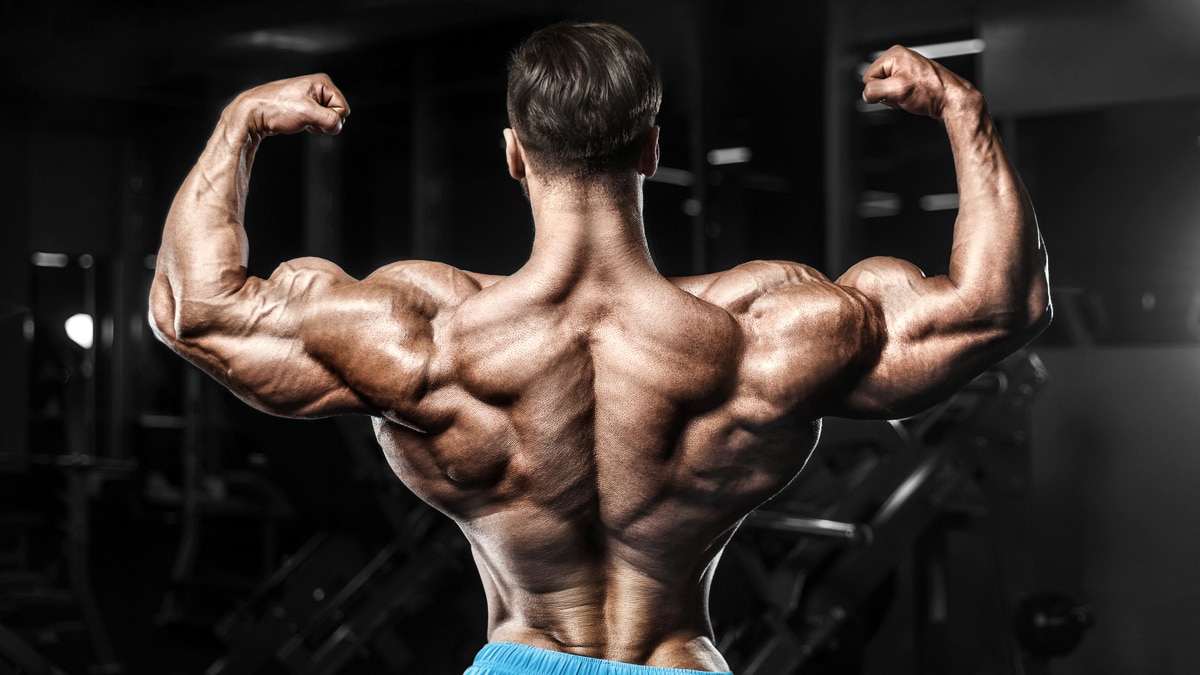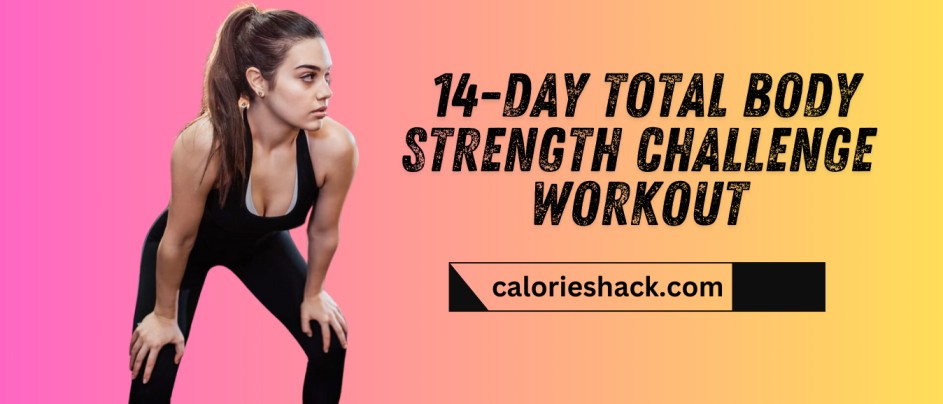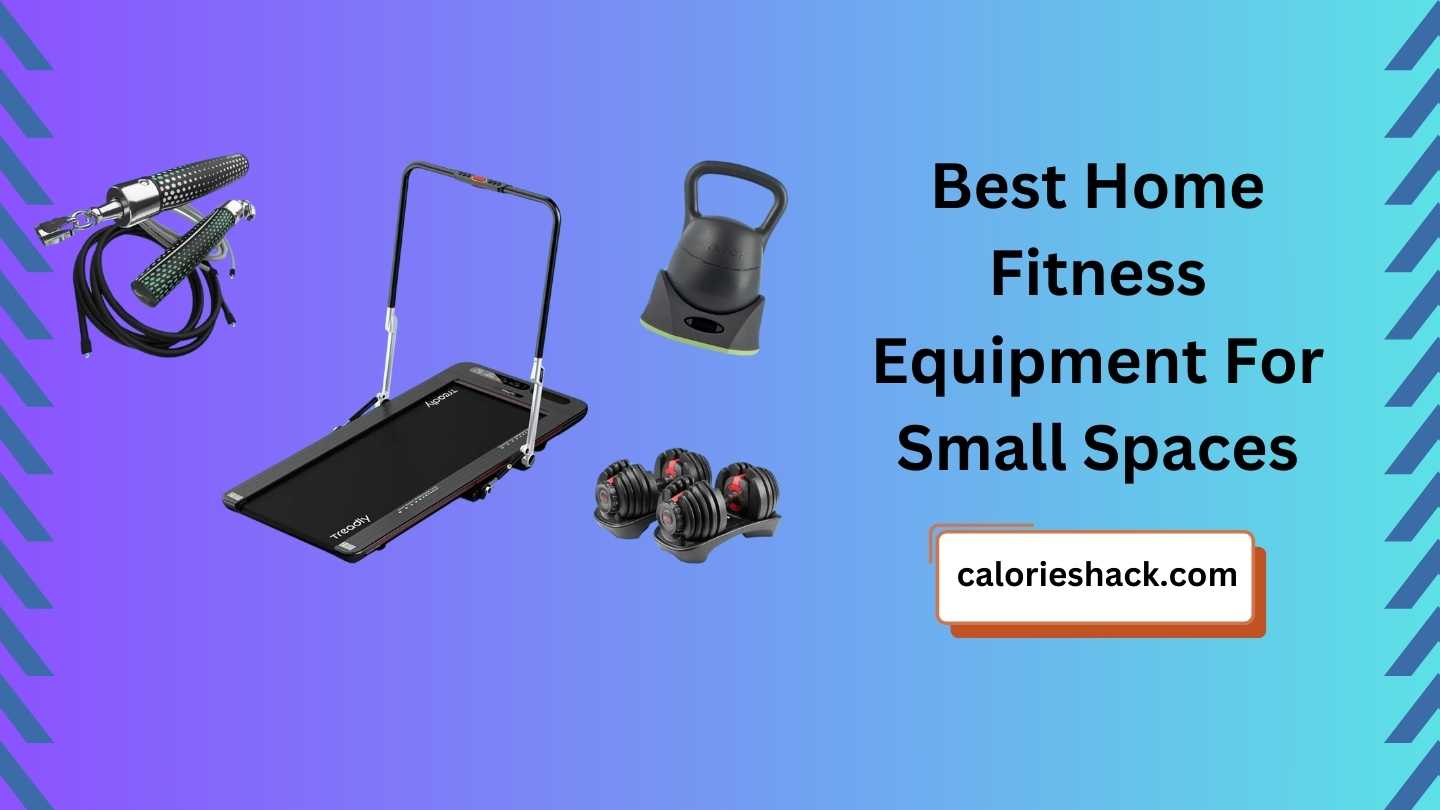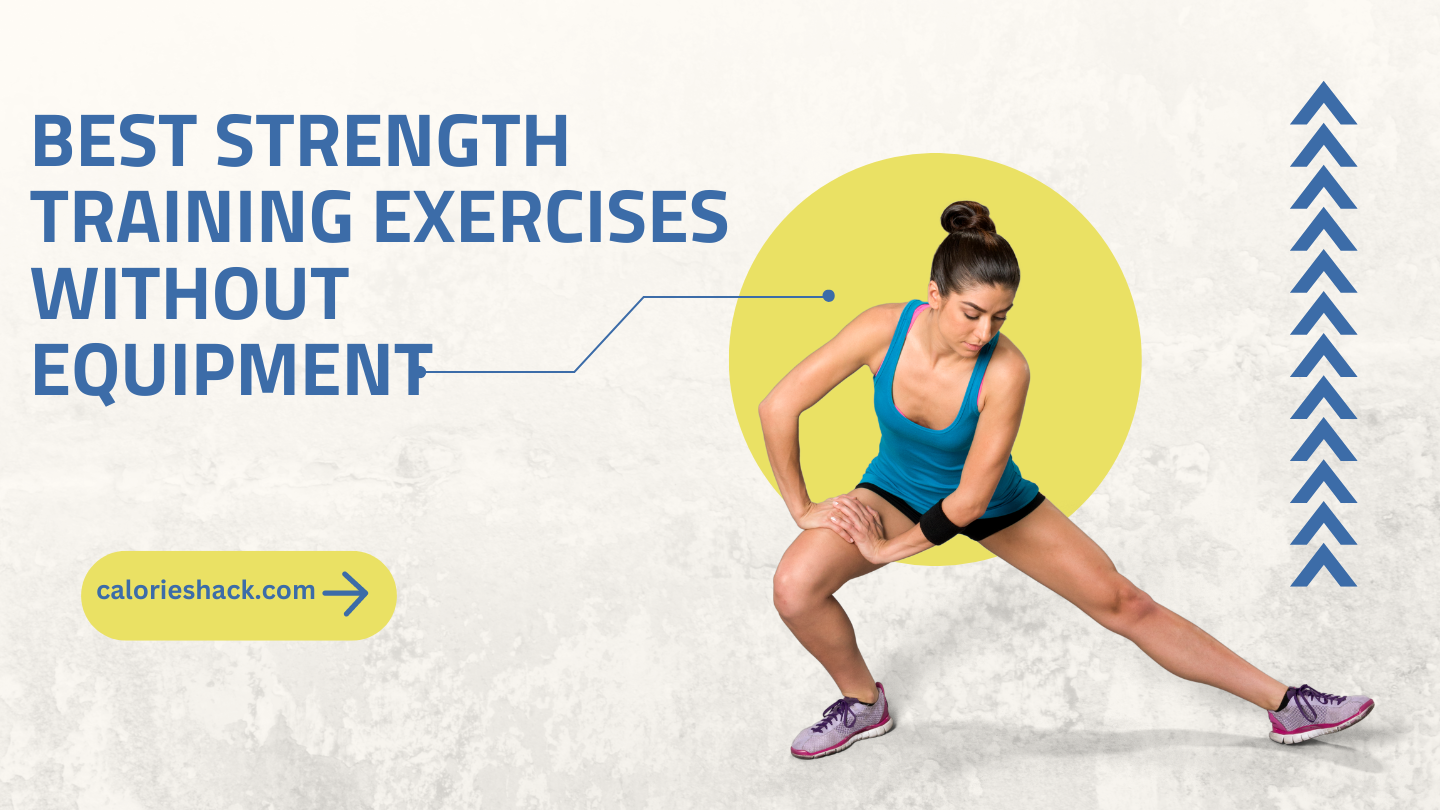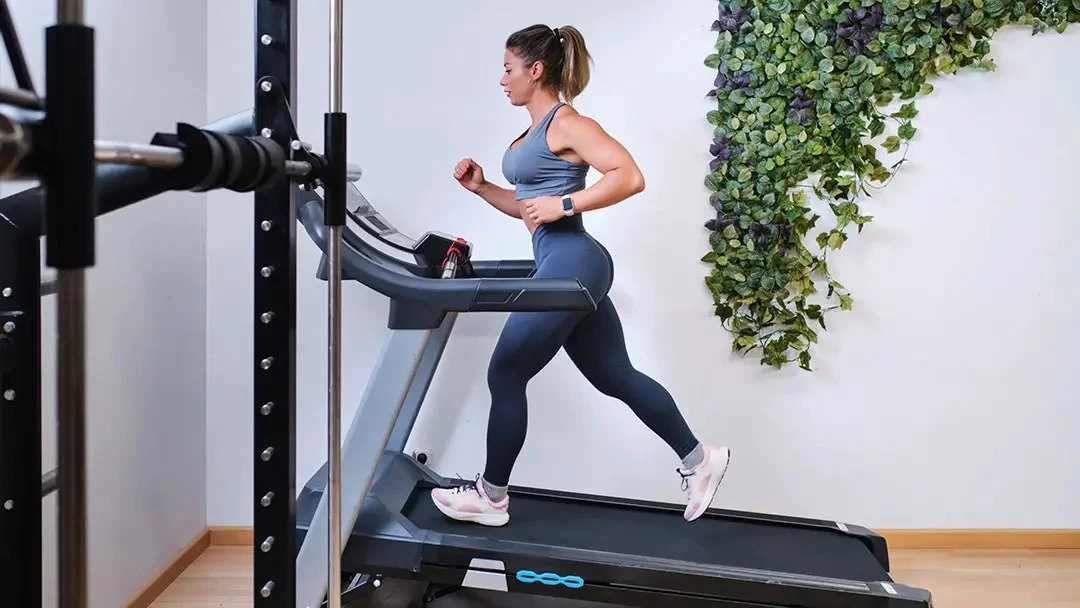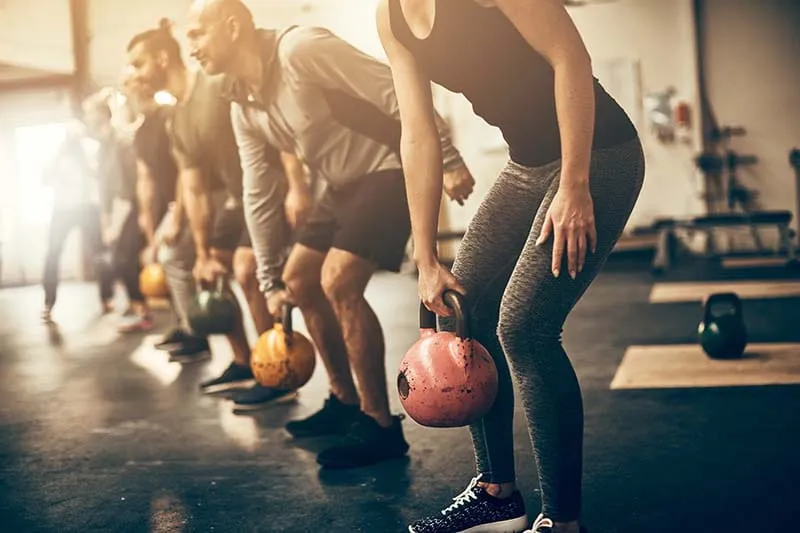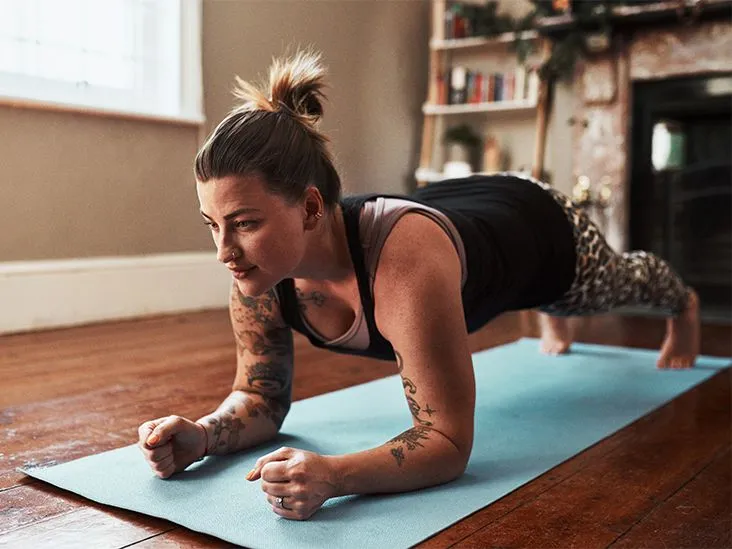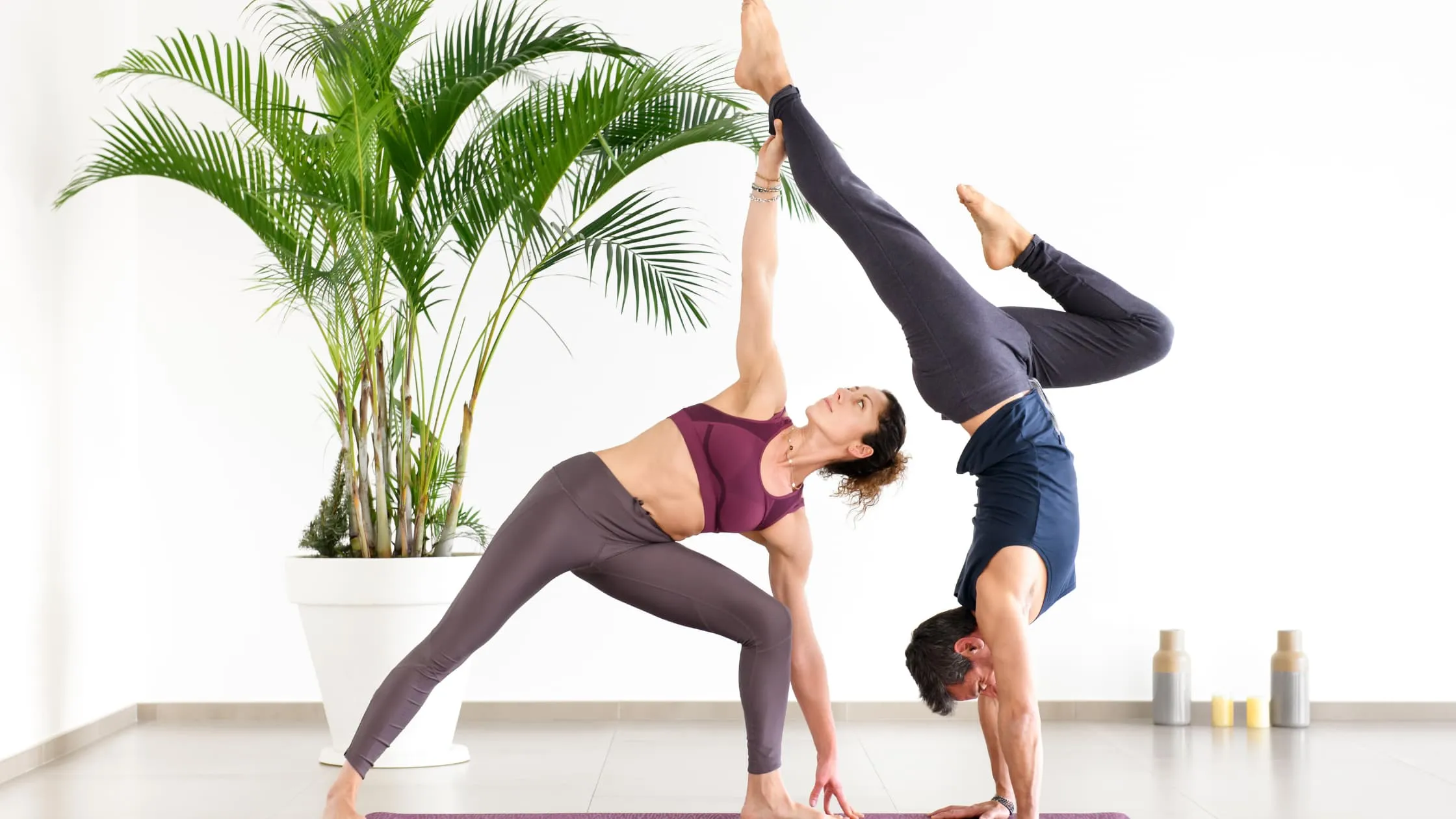Monday is "International Chest Day" at gyms worldwide, and Tuesday might be "International Back-and-Biceps Day," considering how often those muscles are coupled in a workout. (Following the cliché, leg training would be pushed back until Wednesday at the earliest, but we'll reserve that gripe for another piece.)
5 Effective Back and Bicep Workouts to Build Muscle
There is no hard and fast rule indicating that back and biceps should be trained together, but apart from anecdotal bro science, there is some rationale to combining these two muscular groups that enable you to pull very hard.
Our guide to training the back and biceps together teaches you how to develop effective upper-body routines for a strong back and muscular arms.
Why work your back and biceps together?
"When it comes to back training, the biceps are the secondary or tertiary mover in any form of row, pulldown, or pullup.
For the purpose of efficiency, "it makes sense to hit the biceps a little more directly in conjunction with their corresponding compound lifts," (i.e. back motions that involve more than one joint, as opposed to biceps workouts that merely bend the elbow).
Back and bicep workouts often begin with rowing or pulldown movements to target the larger back muscles while you're fresh.Starting with biceps curls may exhaust your arms, hindering your ability to help with back motions. Therefore, it's recommended to keep bicep workouts until after back training.
The push-pull split is one of the most famous and time-tested exercise splits in muscledom, in which you train muscles that push one day and pull the next. For example, on Monday, focus on chest, shoulders, triceps, quadriceps, and calves, followed by back, biceps, glutes, hamstrings, and rear deltoids exercises on Tuesday. This kind of timetable makes it simple to maintain balance in your training and guarantees that no muscle groups are overlooked.
Of course, you do not need to workout your whole body every day. You may perform upper-body pushing one day, upper-body pulling (aka back and biceps) the next, followed by a leg day later in the week. A back and biceps workout works well with all forms of the push-pull split.
Recommended to read:
- Workout Routines For Beginners At Home
- Exercise Routines For Teenage Girls 25 Tips
- Quick Fixes For Sore Muscles
- Are You Exercising Too Much? Here’s How To Tell
Back and biceps anatomy

The key muscles engaged while exercising the back and biceps are:
Back
- Latissimus dorsi (often known as the "lats").These are the large muscle sheets that stretch down the sides of your back, allowing you to drag your arms lower and backward.
-Teres Major. A tiny muscle below the shoulder that helps you bring your arms down and back.
-Rhomboids. The upper back muscles lift, retract, and rotate the shoulder blades downward.
-The middle and lower trapezius muscles ("traps").These men retract and compress their shoulder blades.
Biceps
– Biceps brachii: Your main biceps muscle, it twists (supinates) the wrist outward and flexes the elbow.
- Brachialis: Located between the biceps and triceps on the outside side of the arm. It flexes the elbow.
*When addressing "back training" in strength and conditioning circles, experts often refer to the upper back. The lower back, namely the erector spinae muscles, play a significant role in leg workouts like deadlifts and squats. You may absolutely include lower-back movements into your back and biceps workouts if you want, but keep in mind the stress that your other workouts may be placing on the region, and avoid overworking it.
The Best Back and Biceps Exercises
Back and biceps workouts may be divided into many types. There are three sorts of back workouts and five kinds of biceps exercises.
Back
1. Horizontal pulls (rows).
Imagine yourself standing to understand how the back workout categories operate. Pulling anything toward your stomach moves it horizontally. Any exercise performed along that plane is considered a row, whether it be a seated cable row, a face pull, a one-arm dumbbell row, and so on. Even if you vary your torso posture, such as bending your hips back to angle your torso parallel to the floor (as in a bent-over barbell row), you're still pulling toward your body as if it were upright, and the exercise remains a horizontal pull.
"Rows should make up the majority of your training volume for back," according to Rusin. "When rowing with dumbbells or handles, rotate your hands to a more externally rotated posture at the peak of the pull [thumbs away from you]. You can't accomplish it with pulldowns and pullups because they need the shoulder to internally rotate, which we already do in our daily lives when we drive, text, or type. Our training should aim to get us out of it, which is why I recommend a lot higher volume on horizontal pulls than vertical pulls."
2. Vertical pulls (pullups, chinups, and pulldowns).
Vertical pulling is somewhat easier to visualize than horizontal pulling. Vertical pull exercises are movements in which you pull yourself up in a straight line or draw a bar down to meet you, and they include various pullup and lat pulldown variants.
Lat pulldowns and pullups target the upper lats and teres major, resulting in wider upper back.
Exercise variants include wide-grip lat pulldown, neutral-grip lat pulldown, reverse-grip lat pulldown, wide-grip pullup, neutral-grip pullup, chinup, aided pullup, and chinup (using a machine or bands).
3. Isolation exercises: straight-arm pulldowns and pullovers.
While horizontal and vertical pulls are usually complex lifts with the biceps acting as a secondary mover, movements like the straight-arm pulldown and pullover practically eliminate biceps muscle participation by maintaining the elbows in a constant position throughout. This enables you to focus more directly on the lats and other upper back muscles, pushing them to function independently. "You'll need to use lighter weight with these exercises," Rusin explains, "but the mind-muscle connection tends to be higher with these isolation movements." Focusing on targeted muscles boosts their potential for growth.
Read also:
- HIIT Workouts In Water May Help People Who Can’t Easily
- Functional Strength Training: Definition, Health Benefits, And How To Get
- 6 Factors That Can Affect How Many Calories You Burn
Biceps
Because the elbow is a basic hinge joint, the curl is the only activity suitable for direct biceps training. Curls, on the other hand, may be modified in both hand and shoulder positions to target the biceps (and their supporting muscles) in quite diverse ways. There are five different kinds of curls.
1. Supinated-grip curls (or regular curls): In a standard barbell, dumbbell, or machine curl, the forearms are supinated, with palms facing forward at the bottom.
Supinated curls primarily target the biceps brachii, which are the major arm muscles used while flexing the elbow.
Exercise versions include barbell curls, dumbbell curls (standing or sitting), and cable curls (bar attachment).
2. Hammer curls are done with a neutral grip: A hammer curl (or any version thereof) is performed by turning your wrists such that your palms face inward toward your body.
The brachialis muscle, located underneath the biceps brachii, and the brachioradialis muscle, located on the thumb side of the upper forearm, become more active during the action. However, the biceps remain the primary mover. Exercise variants include dumbbell hammer curls, cable hammer curls (rope attachment), neutral-bar curls, and cross-body hammer curls.
3. Pronated-grip curls (or reverse curls): Pronated curls are the inverse of a supinated grip, with the palms facing you in the down position and downward to the floor at the peak of the lift.
Pronated/reverse curls primarily target the brachialis and brachioradialis, compared to supinated and neutral-grip curls.
Exercise variants include barbell reverse curl, dumbbell reverse curl, cable reverse curl, and preacher reverse curl (dumbbell, barbell, or cable).
4. Shoulder flexion (Preacher curls): Curls performed on a preacher bench need the upper arms to be locked into a modest shoulder flexion. Your elbows are positioned in front of your body.
Target muscles: The flexed shoulder posture allows you to isolate the biceps more effectively and establishes a stronger mind-muscle connection.
Exercise variants include barbell/EZ-bar preacher curl, dumbbell preacher curl, machine preacher curl, and cable preacher curl.
5. Shoulder extensions (incline curls): Unlike the preacher curl, holding the upper arms behind the chest (shoulder extension) throughout the curling action allows for a larger stretch in the biceps. The most frequent method is to lie back on an incline bench, keeping the upper arms perpendicular to the floor during the action.
Curling with the biceps extended emphasizes the long head of the muscle, which generates the majority of the peak when flexed.
Exercise variants include incline dumbbell curls, incline cable curls, and standing one-arm behind-the-back cable curl.

